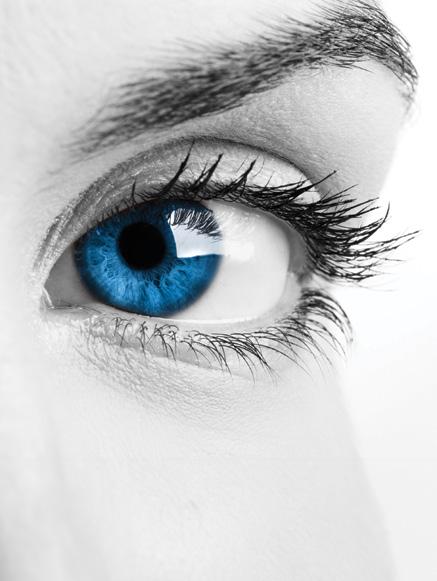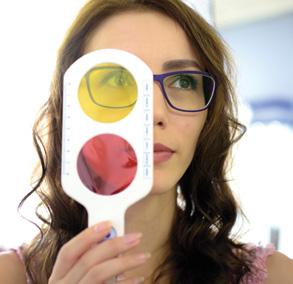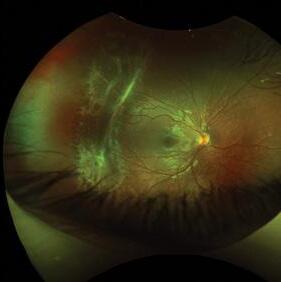What is the potential income?
Optometrists practice in rural communities, suburban areas and large cities in a variety of settings. Within the private practice setting, optometrists may be practicing alone or in a group practice with other ODs and/or MDs. Where a practice is established and the mode of practice can both affect the potential income for optometry.
Data from the American Optometric Association’s 2022 Survey of Optometric Practice shows the average net incomes ranging from $168,193 for the primary practice of optometry to $204,773 for optometrists who own all or a portion of their practice. The graphic below from Review of Optometry’s 2023 Salary Survey illustrates the average income of full-time optometrists in each region of the United States.
What are the prospects for finding a position following graduation?
At SCO, we offer a comprehensive placement service to our graduates. Career counseling begins in the first year and continues throughout the four-year program. It is intended to prepare students for a career in optometry, while complementing their interests and longterm goals for practice. Students may utilize the online placement service listing, and those who do typically receive four to six practice opportunities as a result. Although the primary source of listings for practice opportunities is our alumni, other sources for listings are welcome.
To further assist, the American Optometric Association maintains an additional practice opportunity network database that is available to all optometry graduates.
Courses
A candidate for admission to SCO is required to present at least three years of undergraduate work that includes a minimum of 90 semester or 135 quarter hours.
Requirements
Admissions
SCO operates within optometry’s centralized application service, OptomCAS. Because of our rolling admissions infrastructure, SCO encourages interested students to apply early in the application cycle.
A completed application includes:
• OptomCAS Application with all supporting documents:
— Personal Statement/Essay
— Official Transcripts
— Two letters of recommendation
• SCO’s Supplemental Application
• Optometry Admission Test (OAT) scores
A minimum of 30 semester hours (or 45 quarter hours) must be completed at a fouryear university or college. The following courses or their equivalents must be completed prior to enrollment.
Prerequisites
General Biology with labs 1 year
Microbiology with lab 1 course
General Physics with labs 1 year
General Chemistry with labs 1 year
Organic Chemistry with lab 1 course
Biochemistry.................................1 course
Calculus 1 course
Statistics 1 course
General Psychology 1 course
Social Science 1 year
English 1 year
What is required to become an optometrist?
Most students enter optometry school after completing a bachelor’s degree. To practice in the United States, students must graduate from a four year Doctor of Optometry (OD) program at a U.S. accredited optometry school such as Southern College of Optometry (SCO). The optometry curriculum emphasizes the biological, medical, visual and optical sciences, as well as the understanding of the health care delivery system.
Optometry
What is an OD?
The perfect vision for your future. A Doctor of Optometry is an independent primary health care provider who examines, diagnoses, treats and manages diseases of the eye, the visual system and associated structures.
Optometrists are the major providers thoroughly trained in all aspects of vision science and optics.
Learn more at
To receive an optometric license to practice in a given state, graduates must also pass National Board Examinations that are administered during the last two years of optometry school. Some states require an additional board examination for licensure. Once licensed, optometrists must complete continuing education hours to maintain their licensure throughout their years of practice.
The three O’s. . . optometry, ophthalmology and opticianry — what are the differences?
Optometry should not be confused with ophthalmology or opticianry. Although the three are related and work together closely, there are distinctions between the preparation for each, as well as various roles each plays.
OPTOMETRY is not an outgrowth of the medical profession. It is an independent profession that has evolved over many years. The scientific roots of optometry come from the field of physics; however, over time, the profession has integrated information from the physical, biological and behavioral sciences. Within this broad body of knowledge is the advanced study of optics, the science of light and vision, as well as the study of human anatomy, pharmacology, pathology,
SCO is a great choice for any student whose desire is to become an excellent, compassionate and successful Doctor of Optometry. What does an OD do?
sensory and perceptual psychology, biochemistry, statistics and epidemiology. Optometry school is a four-year full time curriculum. A one year residency is optional because the clinical education is included in the curriculum.
OPHTHALMOLOGY specializes in the medical and surgical care of the eyes and visual system, and in the treatment of eye disease and injury. To become an ophthalmologist – after completing a bachelor’s degree – students must enroll in medical school. After four years of medical school, one or more years must be spent in general clinical training, and three or more years in a hospital-based ophthalmology residency program. Additionally, students may spend another year in a specialty
fellowship. That is over 10 years of education before an ophthalmologist is able to practice, compared to the four years of optometry school optometrists must complete before practicing.
OPTICIANRY consists of filling prescriptions for corrective eye wear, including glasses, contact lenses, low vision aids and ocular prostheses. Opticians grind lenses and fabricate eye wear as well as adjust, replace and repair ophthalmic devices. They are not required to complete any specific academic program in most states. They can receive on-thejob training and become a certified optician by passing an examination administered by the Optician’s Association of America.
How does SCO prepare students to practice full-scope optometry?
SCO has a long tradition of developing outstanding clinical Doctors of Optometry. The college prepares its students with a talented, diverse and dedicated faculty; an integrated and challenging curriculum; and comprehensive clinical training.
Students gain clinical experience by working with dedicated practitioners who provide services to a diverse patient population, addressing issues related to general health, eye health and visual function. The Eye Center, one of the largest state-of-the-art vision and eye care facilities of its kind in the United States, was specifically designed to meet patient care and the clinical education needs of our students. Among other advanced features, The Eye Center boasts one of the most complete optometric technology centers in the nation. Faculty clinicians serve not
only as teachers but as role models and mentors, demonstrating to students how to effectively relate to and manage patients, and how to gain patient confidence and compliance with treatment plans.
The SCO externship program, which occurs during a student’s fourth-year and runs over the course of eight months, gives students the opportunity to work directly with doctors in private practice and multi-disciplinary settings where additional patient care experiences and one-on-one“coaching” is possible.
The diverse patient encounters seen in The Eye Center provides a strong clinical preparation. Students see approximately 2,600-2,900 patient encounters by graduation in a variety of clinical settings, including primary care, ocular disease, pediatrics, vision therapy, low vision, and contact lens.
Optometrists (ODs) provide eye and vision caze by examining the internal and external structure of the eye to assess function and health. They can diagnose/treat vision conditions like near/farsightedness, astigmatism and presbyopia, which is the gradual, agerelated loss of the eyes’ ability to focus actively on nearby objects. ODs also treat eye diseases like glaucoma, cataracts and retinal disorders. They can also evaluate the eyes for signs of systemic diseases like hypertension and diabetes. In many cases, optometrists may also provide pre- and postoperative care to eye surgery patients. ODs can also provide services which seek to enhance the quality of their patients’ lives in the home, workplace and leisure activities.
These services include…















